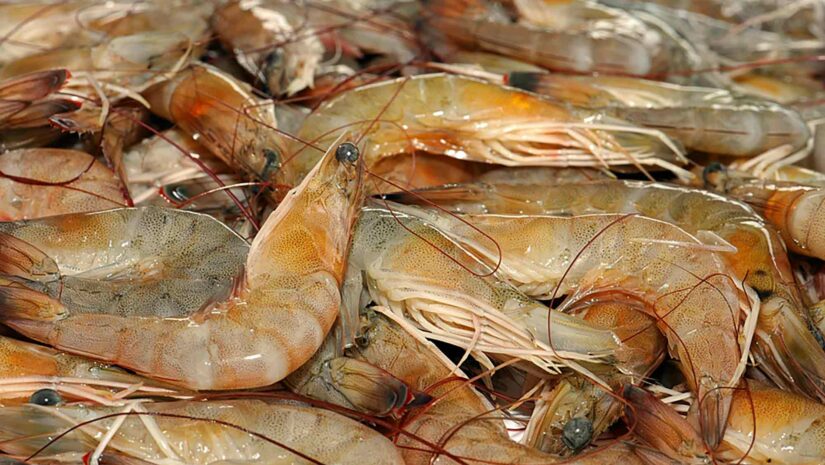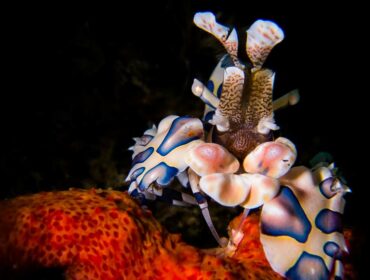The Gulf of Mexico is rich with marine life, including cetaceans, crinoids, reef fish, invertebrates, and shellfish. Within its vast waters, one of the most populous sea creatures is the free-swimming shrimp. This type of shellfish is present in such large numbers that the annual commercial yield in the Gulf exceeds that of the South and mid-Atlantic, Chesapeake Bay, and New England regions combined.
The abundance of Gulf Coast shrimp grants surrounding areas with a good source of livelihood, as well as a wonderful tradition. Every year, seafood lovers and shrimpers flock to the region to enjoy Gulf shrimp season—an iconic event complete with matching festivals and local practices.
In Texas, for example, the summer shrimp season is ushered in by sending 450 boats to the open waters to retrieve the best catch. The state also hosts the Shrimporee, which sees more than 60,000 people gather at Aransas Pass to enjoy seafood, live performances, carnival rides, and cook-offs.
Local and federal agencies determine when shrimp season opens and closes. Regulatory bodies like the Gulf of Mexico Fishery Management Council (GMFMC) and the National Marine Fisheries Service (NMFS) gather data about shrimp population and evaluate it alongside social and economic information in order to maximize benefits and preserve the resource. In Alabama, Florida, and Mississippi, the event typically starts sometime in June, while Texas has its celebration in mid-July. Louisiana shrimpers, in contrast, head to the open waters in August.
What Kind of Shrimp are in the Gulf of Mexico?
Although there are many different types of shrimp in the Gulf of Mexico, these three are the most commonly recognized:
Brown Shrimp
Also known as brownies, red shrimp, or summer shrimp, Farfantepenaeus aztecus is one of three species of penaeid shrimp harvested from the Gulf of Mexico. This common Gulf of Mexico shrimp is a popular delicacy among humans, thus possessing great commercial value. Resident critters in the Gulf are particularly vital to the nation’s economy, as 97 percent of America’s harvest comes mainly from Texas and Louisiana. This species of shrimp also comprises the diet of a variety of larger marine life. As such, its presence is integral not just on the surface, but also underwater to ensure the balance of aquatic ecosystems.
Status
Over the past few years, a number of environmental factors have affected the growth and population of brown shrimp. Temperature, salinity, and tidal height have impacted stock assessments, causing projected harvests to occasionally fall below average. But thanks to strict compliance with fishing regulations, the status of brown shrimp is still within desired population levels and the species is kept safe from overfishing.
Where to find Brown Shrimp
They live in shallow waters that’s usually less than 180 feet deep and no more than 360 feet deep. As they grow, they move to deeper, saltier waters from their seaweed nurseries. Their busiest time of day is at night or at dusk. When they’re inshore, these types of shrimp like areas that are muddy or heavy in organic, decaying matter.
How to Identify Brown Shrimp
Brown shrimp are characterized by their brown or reddish mottling color that is most pronounced at the ends of their tail fans. They can grow up to 7 inches (17.5 cm) in length and have antennae that are nearly as long as their bodies. Compared to the common prawn, brown shrimp are shorter and have a flatter build. The crustacean uses 10 slender walking legs, the first three pairs of which are clawed, and five pairs of swimming legs for locomotion.
Fun Fact
- Brown shrimp only live for about two years.
- Females release a whopping 500,000 to 1 million eggs near the ocean floor.
- To hide from their predators, brown shrimp use chromatophores to blend into their environment.
White Shrimp
Litopenaeus setiferus, also known as northern white shrimp, lake shrimp, or southern shrimp, were the first species of commercially harvested shrimp in the United States, dating back to 1709. Ninety percent of white shrimp harvested in the US comes from the waters off of Louisiana and Texas. This type of shrimp is prized for its firm texture and sweet flavor.
Status
White shrimp are highly fecund and viable. They are able to rebound quickly from unfavorable environmental conditions and are closely monitored to maintain sustainability. In the Gulf of Mexico, white shrimp can be found in abundance as they’re protected from overfishing.
Where to Find White Shrimp
This type of shrimp live in very shallow waters that’s less than 90 feet deep, going no more than 270 feet in depth as they migrate. The young shrimp grow in estuaries with muddy bottoms and low salinity.
How to Identify White Shrimp
White shrimp are mostly light gray in color with green pigment lined on its margins and blotched on its tail. A yellow band is also present on its abdomen. Its body can reach a maximum size of eight inches (20 cm), which its antennae overtake in length by more than two or three times. But among its characteristics, one of the most notable would probably be its smooth and ungrooved carapace protecting the shrimp’s cephalothorax.
Fun Facts
- Female shrimp are significantly larger than their male counterparts.
- Cannibalism is common among adult white shrimp.
- White shrimp favor warmer temperatures and are threatened when the cold hits 37.4°F (3°C) and below.
Pink Shrimp
Farfantepenaeus duorarum, or pink shrimp, are known for their tender, sweet meat and are caught year-round, although they’re more abundant during the winter months. They feed at night, usually on seagrass fragments, detritus, and small bivalves.
Status
Pink shrimp are subject to the same strict fishing rules and regulations that are applied to brown and white shrimp. While their survival is highly dependent on favorable living conditions, they boast a fast growth rate and are able to reproduce early in their life cycle. Official stock assessments indicate that their numbers are consistently marked above target.
Where to Find Pink Shrimp
Pink shrimp are most prevalent off the coast of southwestern Florida where they reside in nursery areas with marsh grasses. As they grow, they migrate to deeper and saltier water, traveling mostly at night or dusk. During the winter, these deepwater shrimp stay in the estuary and bury themselves in substrate to protect themselves from the cold. When early spring arrives and the shrimp have grown rapidly, they move out to the deeper ocean waters where they live primarily on sand, sand-shell, or coral mud bottoms.
How to Identify Pink Shrimp
The most distinguishable trait of pink shrimp are the dark spots located on each side between their third and fourth abdominal segments. Their beak-like projection (called the rostrum) is highly developed, toothed, and extends to or beyond the outer part of their eyes. What’s more, this type of shrimp can grow over 11 inches (28 cm) in length, making it the biggest among the three Gulf shrimp.
Fun Facts
- Pink shrimp begin their life as males and later on develop into females (protandry).
- Their common name is derived from the color of the shrimp when cooked.
- Pink shrimp practice a courtship ritual before mating.




